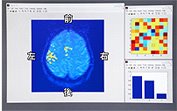 Researchers in
Researchers in
It’s significant that Yukiyasu Kamitani, one of the boffins behind the project, believes that the robot hand could be made to respond faster than a flesh-and-blood limb. "The next step for me is to decode faster, even before the person moves their hand, by reading the brain activity related to intention," he told New Scientist.
As noted in a previous post, there is a roughly one-second lag between a person’s intention and action when steering around a bend, for example. Reaction delays in emergencies – when slamming on the brakes – may be slightly shorter but not by much, particularly given that your brain has to tell your leg to shift itself over to the middle pedal before braking can even start (unless you’re in a Mercedes S-Class, of course, in which case you can leave it up to the automatic braking system, if you're feeling really brave).
What better way to cut reaction times, without wresting control from the driver, than by letting the car’s emergency systems take their cue from the driver’s brain?
Never mind intercepting instructions for the leg to get braking, brain-scans could register a much earlier impulse – the sudden surge of panic a driver feels in the instant that trouble becomes evident. This must register in the brain like a firework going off.
Sadly, brain-machine interfaces are a few years away yet. Honda’s experiments relied on functional magnetic resonance imagining (fMRI) – the kind of huge toroidal scanners used in hospitals. Not only do these scanners weigh upwards of 10 tonnes, they also create magnetic fields of such intensity that they are capable of turning heavy metal objects like fire extinguishers into lethal airborne projectiles.
So the current system would not only be limited to installation in heavy goods vehicles, it might also hasten road accidents – by physically grabbing passing bits of metalwork (ie cars) and mashing them into you. So, some slight refinement will be required before we'll all be driving by the power of thought alone.








